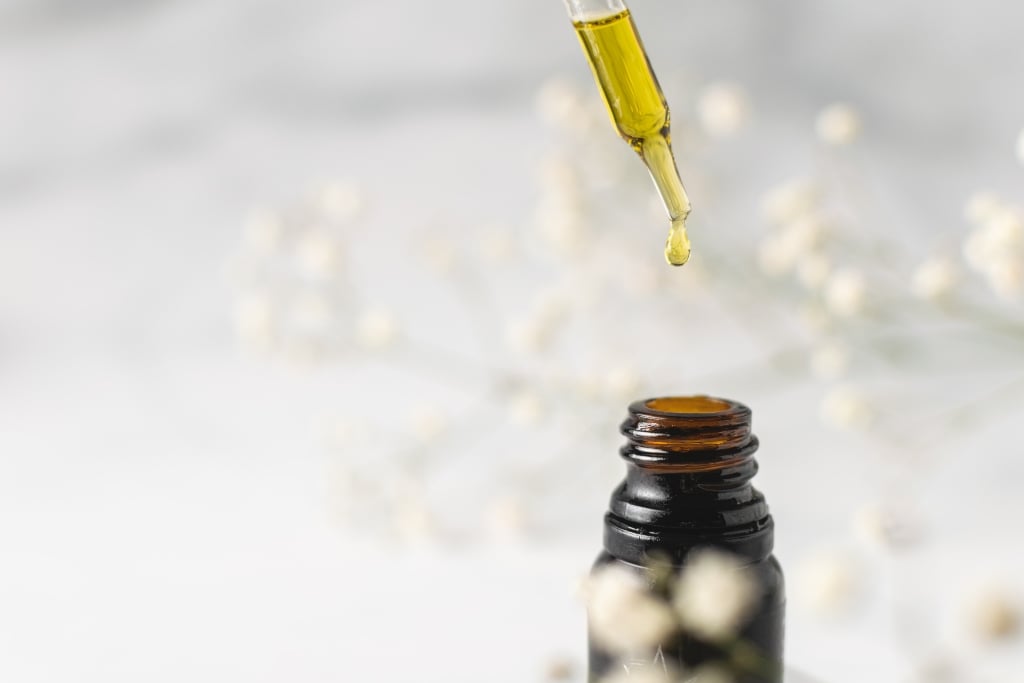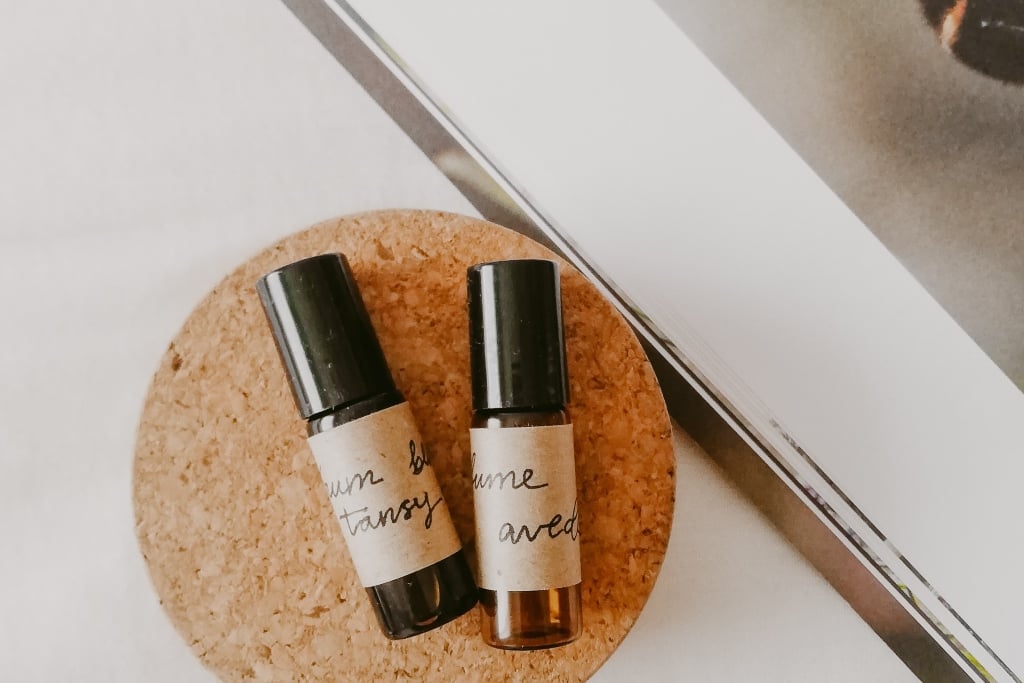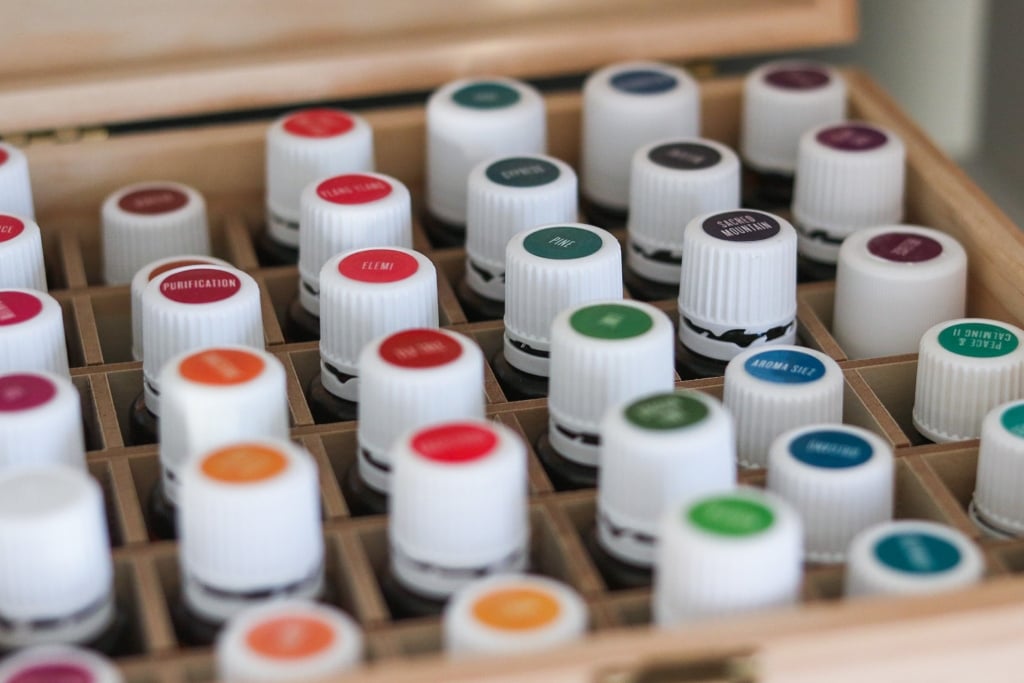Blog
The Dangers of Synthetic fragrances

By Hanna Oltmanns - April 3, 2023
The Environmental Working Group (EWG) conducted a study and found that, on average, fragrance products contain 14 hidden chemicals that aren’t listed on the label. These chemicals can include substances linked to hormone disruption, allergic reactions, and reproductive toxicity, which raises serious concerns about the safety of the products we use every day. Despite this, the fragrance industry is not required to disclose these hidden ingredients, leaving consumers unaware of what they are truly exposed to.
Scent, however, is more than just a label – it’s a powerful trigger that can evoke deep emotions and transport us to different moments in our lives. A particular fragrance might instantly bring you back to a cherished childhood memory, like the comforting smell of your grandma’s kitchen or a perfume that reminds you of a loved one. This unique ability of scent makes it all the more important to be aware of the ingredients in the fragrances we choose.
What are synthetic fragrances?
Synthetic fragrances are chemically manufactured scents found in a wide range of products, from cosmetics to household cleaners. According to their official definition, they are a blend of chemicals used to create specific scents. These fragrances are everywhere, including personal care products, laundry detergents, candles, and even food.

The risks of synthetic fragrances
Synthetic fragrances can contain over 3,000 different chemicals, many of which are harmful. A study by the Environmental Working Group (EWG) found that synthetic fragrances often contain hidden chemicals, some of which are linked to serious health issues.
1. Allergic reaction
Fragrances are one of the top five allergens globally, causing reactions such as headaches, migraines, and skin irritation. More than 50% of shampoos, conditioners, and styling products list “fragrance” as an ingredient, but it doesn’t improve the product’s performance—it simply adds an artificial scent.
2. Endocrine disruption
Many chemicals in synthetic fragrances, including phthalates and synthetic musks, are known to disrupt the endocrine system. These chemicals can mimic human hormones, leading to abnormal cell reproduction and long-term health risks like cancer, infertility, and other hormone-related issues.
3. Cancer-causing
Of the thousands of chemicals used in synthetic fragrances, at least seven are known to be carcinogenic, with many banned in the EU but still present in products sold in the U.S. One such chemical, benzene derivatives, is linked to leukemia and other cancers.
4. Respiratory and neurological issues
Regular exposure to synthetic fragrances has been linked to asthma, difficulty breathing, and neurological symptoms such as brain fog, dizziness, and headaches. This is particularly concerning for individuals with pre-existing respiratory conditions.

The beauty industry's loophole
One of the biggest concerns with synthetic fragrances in beauty products is the lack of transparency. Manufacturers are allowed to label these chemical blends simply as “fragrance” or “perfume” without disclosing the individual ingredients, thanks to a legal loophole protecting “trade secrets.” This allows companies to hide dozens or even hundreds of harmful chemicals behind a single term.
“A single synthetic fragrance can contain up to 200 different chemicals, all listed under the one word “fragrance”.

How to avoid synthetic fragrances
Here are some tips to protect yourself from the harmful effects of synthetic fragrances:
1. Read ingredient labels carefully
Always check product labels for terms like “fragrance” or “perfume.” These are red flags indicating the presence of undisclosed chemicals. Opt for products that explicitly state they use essential oils or natural plant extracts.
2. Choose trusted brands
Smaller, eco-conscious brands are often more transparent about their ingredients. Look for brands that are committed to using 100% natural ingredients, prioritizing natural or organic fragrances, and being open about all their product components.
3. Switch to essential oils
Opt for products scented with essential oils, which are derived from natural sources like plants and can offer therapeutic benefits.
4. Beware of “unscented” claims
Some “unscented” products may still contain chemicals to mask other odors, so always check the ingredient list.
5. Use ingredient verification apps
Apps like INCI Beauty, Think Dirty and Yuka can help you verify the safety of ingredients in your personal care products. These apps scan product barcodes and provide detailed information about each ingredient.
If you would like to know which safety rankings Suntribes products have, check out our article on INCI Beauty and Yuka.

Essential Oils vs. Synthetic Fragrances
Essential oils, while often a safer alternative, come with their own considerations. They are derived from natural plant sources, such as flowers, leaves, and bark, and are generally free from harmful chemicals. However, producing essential oils is labor-intensive and costly. For example, creating just 1 kg of rose essential oil requires up to 10,000 kg of rose petals. This makes essential oils more expensive, but they offer unique benefits that synthetic fragrances simply can’t replicate.
The Environmental Impact
Synthetic fragrances are often created from petrochemicals, which are derived from fossil fuels. This not only contributes to environmental pollution but also results in products that take much longer to break down in the ecosystem.
Essential oils, on the other hand, are biodegradable and have a much lower environmental footprint and are therefore a more sustainable option.

Suntribe’s Commitment to 100% Natural Ingredients
At Suntribe, we never use synthetic fragrances in our products. Our formulas are entirely natural, and the subtle scents come from organic butters, waxes, or essential oils. For instance, the vanilla scent in our Baby & Kids SPF 30 Sunscreen comes directly from the fruit of the vanilla planifolia orchid—not a synthetic imitation.
Key Takeaways
- Synthetic fragrances can contain harmful chemicals linked to allergies, hormone disruption, and even cancer.
- Be proactive by reading labels and choosing products that use essential oils or plant-based aromas.
- Use apps like INCI Beauty, Think Dirty or Yuka to identify potentially harmful ingredients in your personal care products.
- Opt for trusted and smaller brands that prioritize transparency and natural ingredients.
By making more informed choices, you can protect your health and reduce your exposure to toxic chemicals. Remeber, every small change you make in your daily routine can have a significant impact on your long-term well-being.
Want to continue reading?
about the author
Hej, I’m Hanna. I love the outdoors and I am the first one to enjoy every beam of sunshine possible. Through traveling several countries over the past few years, I have become more and more aware of the great need for sustainability in every aspect of our daily life. Through working with Suntribe I am joining the movement of sustainable production of organic cosmetic and help to raise awareness about the issue of harmful chemicals in personal care products for humans and nature alike.





